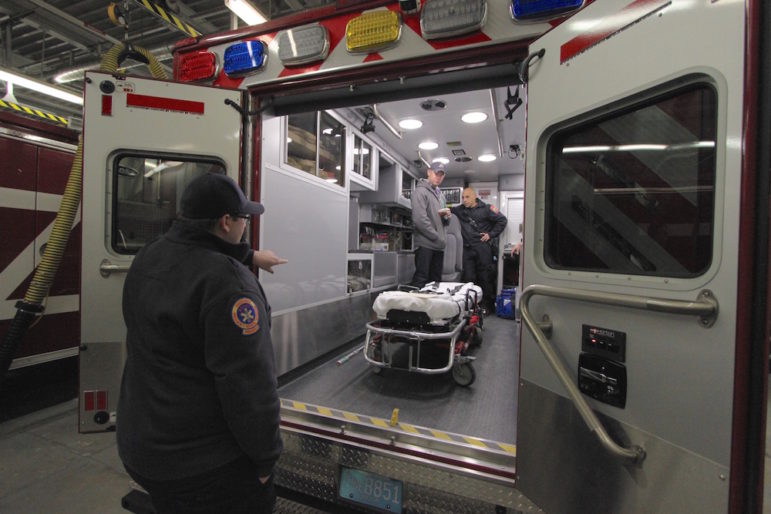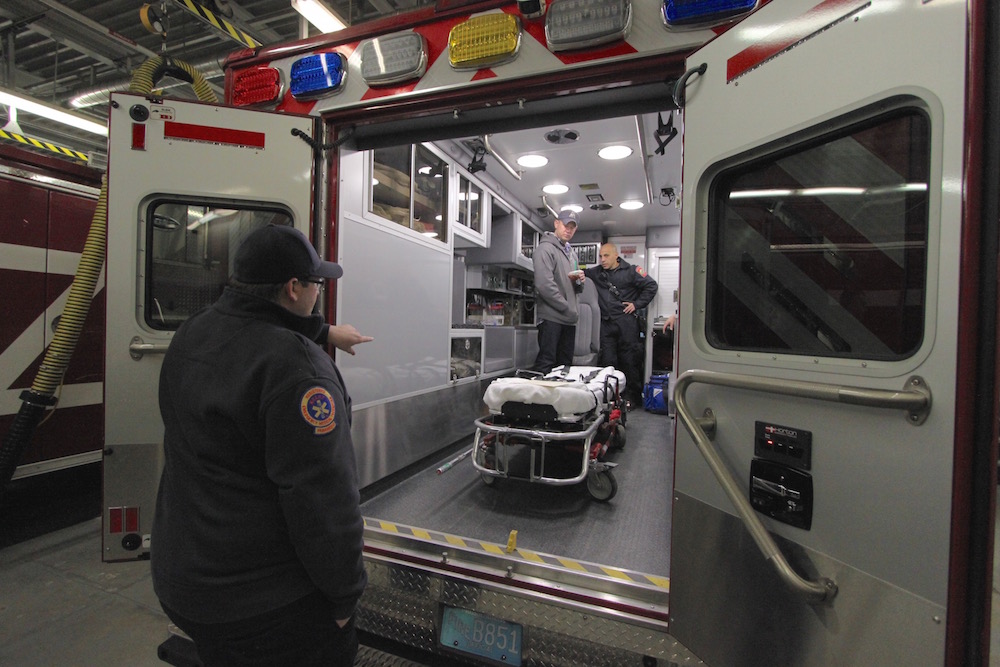
By adding additional staffing, the Watertown Fire Department plans to run a second ambulance, which will enable them to cover more medical calls in Watertown, and cut down the time it takes to reach someone in need of medical attention.
Currently the Fire Department runs an Advanced Life Support (ALS) ambulance, that can provided paramedic level care to patients. The WFD has a second ambulance that currently sits idle. By adding two more people to a shift, that ambulance can hit the streets with a Basic Life Support (BLS) crew.
More and more, the Fire Department’s focus is medical calls, said Watertown Fire Chief Bob Quinn, who told the Town Council the second ambulance would improve the WFD’s service.
In 2018, the Fire Department had more than 6,500 runs, and nearly 3,400 were for medical calls. Quinn said the emergency medical service (EMS) calls have risen by 14 percent over the past five years.
While Watertown responded to many of the EMS calls, about 900 had to be covered by a private ambulance company because Watertown’s ambulance was busy, Quinn said.
When asked by the Council if the second ambulance would allow the WFD to respond to all the missed calls, Quinn said: “I feel we should capture a large number of those 900 lost runs.”
This would benefit Watertown in a couple of ways. First, Quinn said, people would receive medical care more quickly because the private ambulances often come from outside of town.
“The average response time of a Professional Ambulance (the private company) is 8 minutes, 8 seconds,” Quinn said. “Watertown ALS’s average response time is 4 minutes, 59 seconds.”
Also, when a WFD ambulance responds to a call, the Town would receive the fees paid for ambulance services. Town Manager Michael Driscoll added $300,000 to the expected amount of ambulance to be collected in Fiscal Year 2020. The total would be $1.4 million.
This amount will help cover the extra staffing needed to run a second ambulance. The WFD will not get any additional firefighter positions, but the overtime budget will be increased by $250,000 to allow two more people to be on duty. This increases the minimum staffing on a shift from 17-19.
The WFD won’t always be able to respond to calls, Quinn said, because sometimes three calls come in at once, or an ambulance may be coming back from a hospital after delivering a patient. Also, the BLS ambulance cannot perform all the services as an ALS ambulance, for instance, an ALS crew can give injection and even administer medication to a patient, but a BLS cannot.
The Fiscal 2020 Budget is expected to be approved in early June, and Fiscal Year 2020 begins July 1, 2019.
